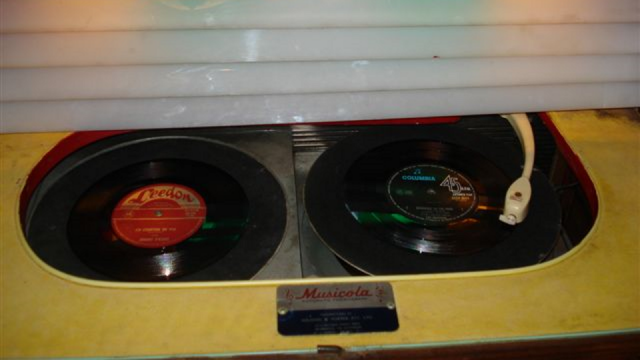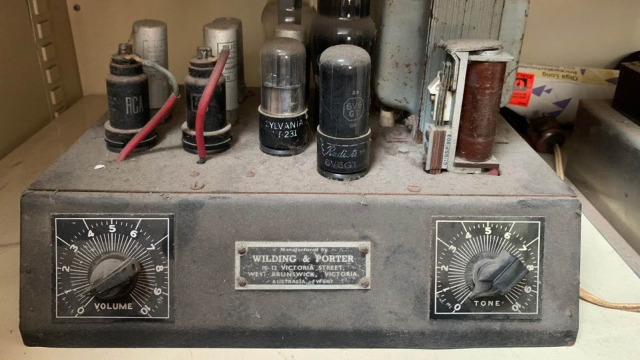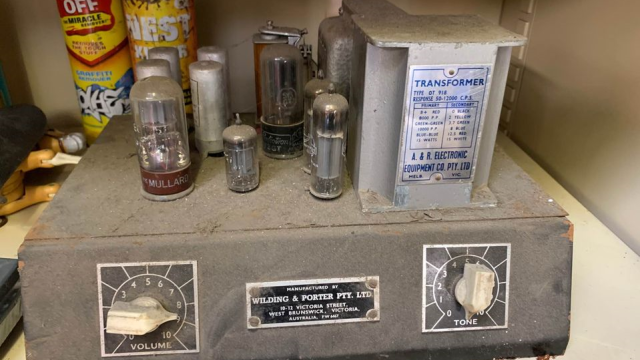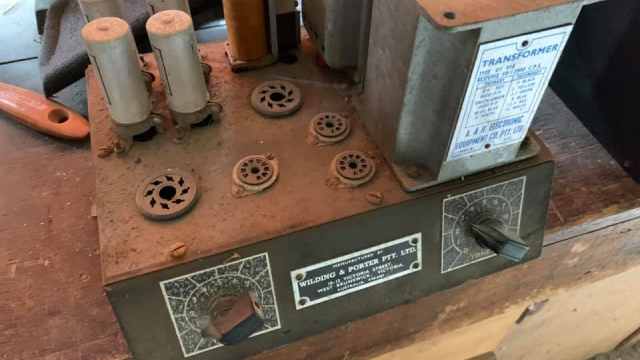Loading...

M12/10C


| Model | M12/10C (early edition) |
|---|---|
| Year(s) | 1953-1954 |
| Speed (rpm) | 78 |
| # Selections | 12 |
| # Records | 12 |
| # Produced | Unknown |
| Dimensions (HxWxD) | 129.5 x 78 x 61 cm (51 x 31.5 x 24") |
| Weight | Unknown |


| Model | M12/10C (later edition) |
|---|---|
| Year(s) | 1954-1956 |
| Speed (rpm) | 78 or 45 |
| # Selections | 12 |
| # Records | 12 |
| # Produced | Unknown |
| Dimensions (HxWxD) | 129.5 x 78 x 61 cm (51 x 31.5 x 24") |
| Weight | Unknown |
The Musicola M12-10C, released in 1953, continued using the same sliding tray mechanism and a similar amplifier as the earlier M12-10B but now powered either a 12" Rola or Magnavox speaker located behind the bottom louvres.
Later models were fitted with an 12" MSP speaker and an upgraded amplifier similar to the next model, the E40-10.
These models had a cast streamlined tonearm with the letter M emblazoned near the tip. These also used a thumbscrew cartridge fitted with sapphire tipped steel needles.
The restyled cabinet had the selector mechanism on an angle featuring instructions on selection and pricing, one record sixpence, two records one shilling, on the face plate.
The mechanism was more visible through the clear laminated curved canopy. The casted mechanism, no longer hand made, resulted in a better looking and working machine than its predecessors.
The earlier version of the M12-10C had three rows of yellow and blue coloured louvres in the bottom of the cabinet which were backlit by a fluro whilst the top of the cabinet was backlit by a fluorescent lamp, illuminating colored plastics that produced a rainbow effect on the horizontal louvres.
The later version of the cabinet was backlit by two fluorescent lamps behind coloured plastics illuminating slanted white perspex louvres in the top and bottom producing a rainbow effect. It now had MUSICOLA and POPULAR HITS emblazoned in different colours on two lightboxes and the selection and pricing instructions were placed the other way around.
By the end of 1953 the 7" 45 rpm records were introduced in Australia (see The Australian 45rpm Revolution) and by the end of 1954 Musiolas were first retrofitted and later specifically built to play 7" 45 rpm records.
The mechanism underwent a gearing change and was fitted with a lightweight plastic Collaro tonearm, ceramic cartrdge and a sapphire stylus.
The 45 rpm model is the most commonly found Musicola, however there are only 12 known surviving examples.
Three Musicola M12/10C jukeboxes from Frog's collection, were donated in 2014 to the Powerhouse Museum in Sydney.
(Serial number #318: 78 rpm model retrofitted to play 45 rpm, #453: 78 rpm model , #473: 45 rpm model)
(Serial number #318: 78 rpm model retrofitted to play 45 rpm, #453: 78 rpm model , #473: 45 rpm model)









